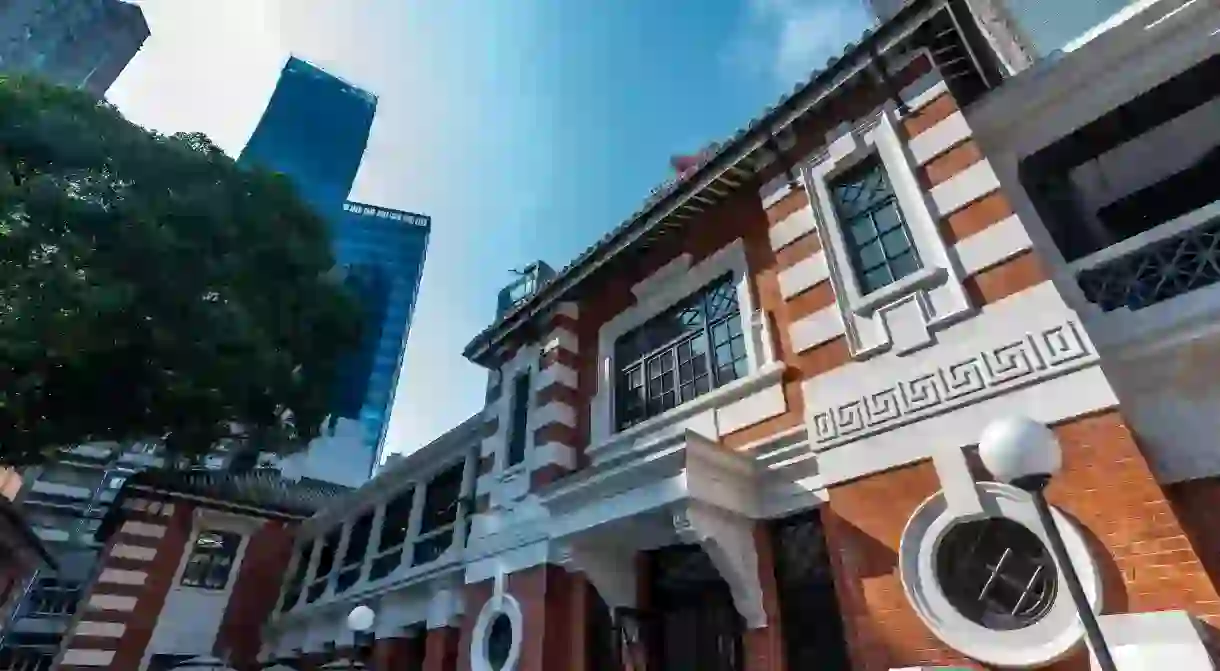Colonial Buildings In Central Hong Kong

Though Hong Kong returned to Chinese sovereignty in 1997, the British left behind some impressive European-inspired structures dating back to Queen Victoria’s rule. The Central District of Hong Kong isn’t just the old administrative capital of the former colony, but also home to historical architecture. Hong Kong is a unique mix of Eastern and Western architectural ideas; in the last decades, this vibrant city has focused on the transition from colonial to global – and has achieved a unique urban look. But, the colonial buildings blend perfectly with the scenery of contemporary Hong Kong. Join us to discover our favourite colonial buildings in Central.
Did you know – Culture Trip now does bookable, small-group trips? Pick from authentic, immersive Epic Trips, compact and action-packed Mini Trips and sparkling, expansive Sailing Trips.
Victoria Prison
Arguably the largest and oldest colonial complex in Hong Kong, the Victoria Prison was built in 1841 on the aptly named Old Bailey Street. Ho Chi Minh was once detained here in 1931, and there were rumors that the conditions of his release included an agreement to spy for the British. The prison was closed in 2006, so you can now walk around the entire perimeter of its stone masonry wall without fear of witnessing a prison break.
Old Supreme Court

The Old Supreme Court is one of the most iconic landmarks of the Central cityscape. Built in 1912, this neo-classical building also housed the Legislative council and currently houses the Court of Final Appeal. Its exterior is a popular location for wedding photography, as is the beautiful Chater garden adjacent to it. A close look on its imposing ionic columns might reveal the wounds it sustained during the Second World War.
The Former French Mission Building

The former French Mission Building is one of the most impressive architectural masterpieces from the Edwardian period in Hong Kong. It was built in 1917 for the Society of Foreign Missions and used by the government shortly before the Second World War. It had a short stint of being the headquarters of the Provisional Hong Kong Government after the war ended. Its long list of tenants included the Victoria District Court, Supreme Court and the Court of Final Appeal. Complete with vaulted ceilings, wooden floors and ornate columns, it’s one of the finest buildings in the city.
Kong Tong Hall
Better know as the Dr. Sun Yat Sen Museum, this Edwardian building was built in 1914 for Ho Kum Tong (brother of Sir Robert Ho Tung). Dr. Sun Yat Sen was a fellow classmate of Ho Kum Tong as they both graduated from Central School, and Sir Robert Ho Tung even provided financial support to Dr Sun’s revolutionary ideals. Though Dr. Sun never set foot inside the building, his ties to the Ho family make it an appropriate place for a museum.
Flagstaff House

Built in 1846 as the Headquarters House for Major General George Charles D’Aguilar, it is one of the oldest Western buildings in the Central District. It was renamed ‘Flagstaff House’ in 1932, and housed the British Forces Commander until 1978. It is now the Museum of Tea Ware in Hong Kong. There’s also the additional convenience of free parking and admission.
St. John’s Cathedral
St. John’s Cathedral is the oldest church in Hong Kong. Built in 1849, it is also the mother church of the Anglican Diocese of Hong Kong. It was intended to be used by the British army, hence its close proximity to the barracks. Though it was a Japanese clubhouse during the war, the church was gradually restored after the occupation. This Gothic style building, with lancet arches and stained glass windows, was adapted to subtropical climates with window shutters and windows that could be opened. Regular church services are held on Sundays.
Former Central Magistracy

This Greek-revival style building, with imposing Doric columns, was completed in 1914 to replace the Hong Kong Magistracy – which was on the same site. The massive granite base that the building sits on is actually a giant basement; in fact, the basement is so big that it caused complications during construction. The red brick façade of the structure contains bricks that were imported from Guangzhou, a logistical feat for the time.
Former Central Police Station
Completed in 1919, the Headquarters Block of the Central Police Station used grand Roman arches and Greek columns to show the authority of the police. The initials of King George V can be seen at the top of the entrance. There is a much friendlier red brick wall with simple masonry on another side of the building. Together with the Central Magistracy and Victoria Prison, the complex symbolizes colonial power and legal authority in the city.
Rawlinson House

Built in 1910, it used to house the Deputy Commander of the British Forces in Hong Kong. It was named after General Sir Henry Rawlinson who served with the British Army in France during the Great War. The building was preserved as a part of Hong Kong Park in the 1980s and converted into the most elegant Marriage Registry building in the city.
Murray House

Even though it’s not in Central anymore, this former fixture of the neighborhood deserves a special mention. Built in 1844, as the officers’ quarters of Murray Barracks in Central, it is one of the oldest surviving buildings in Hong Kong. It’s a perfect example of how Classical architecture adapted to the tropics by providing generous verandas all around the building and a high floor clearance for better ventilation. Originally situated on Garden Road, it was dismantled in 1982 to make way for the Bank of China building, and restored in Stanley in 2001 – brick by brick like a lego model. Head out there to enjoy the sea breeze and the magnificent views of the South China Sea.













